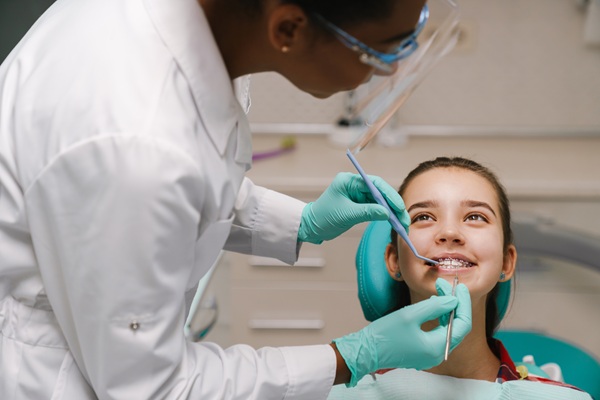Cavity Prevention Information from a Pediatric Dentistry Visit

Pediatric dentistry is a field that focuses on oral health care for younger patients. Typically, toddlers, children and adolescents visit a pediatric dentist until they are 18. Pediatric dentists offer general services, such as exams and cleanings, as well as more in depth procedures, such as cavity fillings.
Cavities affect patients of all ages, which is why routine pediatric dentistry visits are necessary. In the event that a cavity does occur, a simple dental filling can restore oral health. Below is an overview of what to expect when getting a cavity filled by a pediatric dentist. This information can be helpful for parents who are preparing their child for an upcoming appointment.
Understanding cavity fillings from a pediatric dentist
Filling cavities
Getting a cavity filled can be frightening for children because the procedure requires numbing agents and dental tools; however, parents and children can rest assured that pediatric dentists have a gentle approach to help children feel safe and secure. A pediatric dentist may show a child each dental tool and explain what they do to help the child understand that there is nothing to be afraid of. Additionally, the procedure is often explained beforehand to help the child know what to expect. Outlined below are the steps a pediatric dentist follows to fill a cavity:
- The child's oral cavity is numbed so that there is little to no pain.
- Laughing gas may be administered via facial mask to help calm the child's nerves.
- The cavitied tooth will be thoroughly cleared out with a dental drill.
- Once cleared, a water pick will be used to remove any remnants in the cavity of the tooth.
- A dental material will be placed within the cavity of the tooth to fill it and seal it off from further damage.
After the filling has been completed, the child may experience some slight sensitivity around the tooth, which is completely normal. Pediatric dentists recommend being gentle and not eating anything too hard or tough in the first 24 hours after the procedure.
How to know when fillings are needed
In general, cavities need to be filled whenever they are present. It is difficult for parents to identify them, especially in young children. Oftentimes, there are no apparent symptoms, which can make diagnosis even harder. Thankfully, with routine pediatric dentistry visits, thorough examinations can be done to identify any warning signs. In some cases, cavities are severe enough that there are noticeable symptoms. Common symptoms include the following:
- black or brown spot on a tooth
- bad breath
- discomfort or pain in or around the tooth
- swollen or tender gums
If parents suspect that their child has a cavity, they should examine their child's teeth for any of the symptoms listed above. If parents are unsure whether their child has a cavity, it is always best to schedule a pediatric dentistry visit, as it is always better to be safe than sorry.
Find out more from a pediatric dentist
Pediatric dentistry visits can go far in the prevention of cavities. Even when cavities do occur, the dentists can take the appropriate steps to treat it right away, whether that be a filling or a more involved restoration, such as a crown. To determine whether your child requires a filling it is best to consult a professional. Reach out today to ask questions or to schedule an appointment.
Request an appointment here: https://www.grandparkwaypediatricdental.com or call Grand Parkway Pediatric Dental at (832) 579-0960 for an appointment in our Richmond office.
Check out what others are saying about our dental services on Yelp: Pediatric Dentistry in Richmond, TX.
Recent Posts
Visiting a pediatric dentistry office with your child ensures his or her future relationship with oral hygiene and dentists, in general. Whenever your child suffers from oral injuries, consider making an appointment with your pediatric dentist to uncover any underlying problems. For instance, injuries to the tongue and teeth could indicate a deeper jaw or…
Fluoridated water is part of pediatric dentistry. It is a convenient and easy way to strengthen and protect teeth at an early age. Many areas have fluoridated water, which is a definite advantage. If you want to know why a dentist will likely recommend fluoridated water, here are the details.Studies show that almost all sources…
Nutrition is an important part of pediatric dentistry. Having balanced amounts of vitamins and minerals can strengthen and protect the teeth. Proper nutrients also fuel dental function. If you want to know how important nutrition is for your child’s oral health, here are the details from a pediatric dentistry professional.Children are still developing. They need…
Dental crowns are important in pediatric dentistry. Each primary tooth is a living guide for the development of permanent teeth. But baby teeth can also suffer from decay. So restoring these teeth is important for the general health of your child. If you want to know if pediatric dentistry uses dental crowns, here are the…


